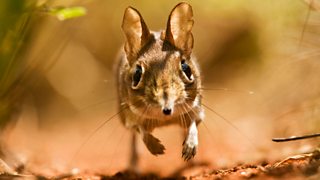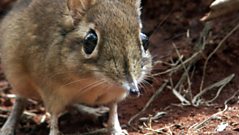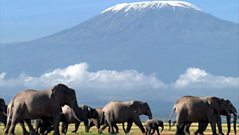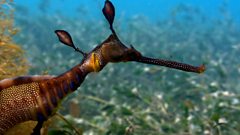
Mango fever
Thought bats were anti-social creatures that only came out at Halloween? Then think again. Every year, hundreds of thousands of straw-coloured fruit bats leave the Congolese forest and fly over a thousand kilometres to Kasanka National Park, a remote swamp in neighbouring Zambia. Here they join the largest gathering of fruit bats in the world.
Giant straw coloured fruit bats inhabit the great forests of the Congo and in late October they set off on a long journey across the forest canopy. Flocks of hundreds become thousands, and tens of thousands become hundreds of thousands. With wings measuring nearly a metre across, they are fast, powerful fliers that can travel over 1,000 miles in just a few nights. How they know when and where to travel is a mystery, but they all end up in one place, a remote swamp in Zambia called Kasanka. In a patch of forest no bigger than two or three football pitches, 10 million bats crowd together to rest and relax for a few weeks after the long journey. This is the largest fruit bat roost on Earth. It's so crowded, complete strangers rub shoulders with one another. As night falls, the reason for their lengthy journey becomes clear. The bats fly out to take advantage of the glut of mango fruits produced by the forest at this time of year. Each bat feeds on 2 kilos of fruit a night, and after six weeks the trees have been stripped of around a billion fruits. With the glut at an end, the vast aerial armada takes flight again and each bat returns to its particular patch of the vast Congo forest.
Duration:
This clip is from
Featured in...
![]()
African wildlife—Βι¶ΉΤΌΕΔ Wildlife Finder
Discover more about Africa’s most surprising and also best-loved wildlife.
![]()
Βι¶ΉΤΌΕΔ Nature
Be captivated, informed and inspired by the world's wildlife.
![]()
The Wildlife of Life
Discover the wildlife of the Life series.
More clips from Mammals
-
![]()
Polar bear trek
Duration: 03:44
-
![]()
Mental maps
Duration: 02:45
-
![]()
Granny saves the day
Duration: 04:00
-
![]()
Nature's biggest battle
Duration: 04:00
More clips from Life
-
![]()
Woodland timelapse—Plants
Duration: 04:14
-
![]()
Woodland timelapse—Plants
Duration: 01:04
-
![]()
Partners for life—Birds
Duration: 02:22
-
![]()
Dancing dragons—Fish
Duration: 03:57











